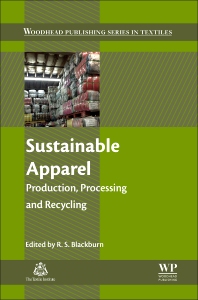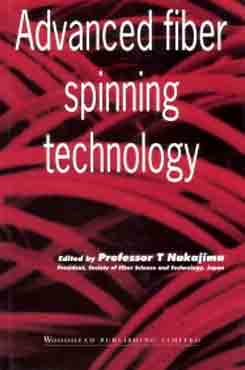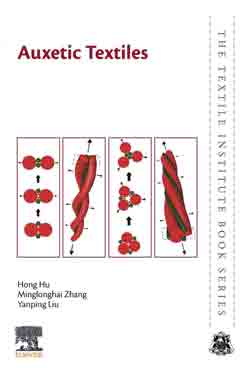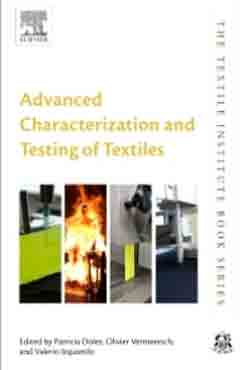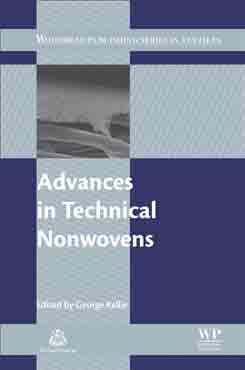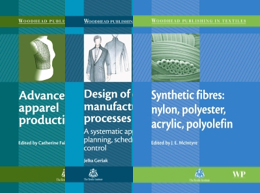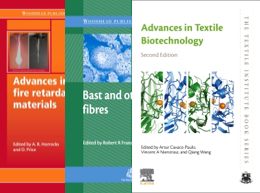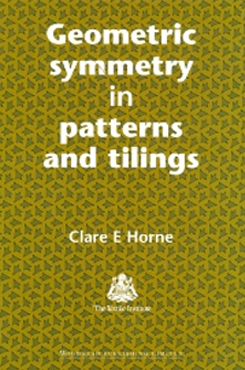Description
Sustainability is an issue that increasingly concerns all those involved in the apparel industry, including textile manufacturers, apparel designers, retailers and consumers. This important book covers recent advances and novel technologies in the key areas of production, processing and recycling of apparel.
Part One addresses sustainable finishing and dyeing processes for textiles. The first two chapters concentrate on the environmental impact of fabric finishing, including water consumption, emissions and waste management. Further chapters focus on plasma and enzymatic treatments for sustainable textile processing, and the potential for improving the sustainability of dyeing technologies.
Part Two covers issues of design, retail and recycling, and includes discussions of public attitudes towards sustainability in fashion, methods of measuring apparel sustainability and social trends in the re-use of apparel.
Key Features
- Reviews sustainable finishing and dyeing processes for textiles
- Addresses social attitudes towards and methods for measuring sustainability in the apparel industry and retail sectors
- Covers recycling of apparel
Readership
R&D managers in the apparel industry, apparel designers and manufacturers, postgraduate students and academic researchers in textile science
Table of Contents
-
- Part One: Sustainable Finishing and Dyeing Processes for Textiles
- 1: Environmentally friendly fabric finishes
- Abstract
- 1.1 Introduction
- 1.2 Waste minimization in fabric finishing
- 1.3 Chemical substitution
- 1.4 Reusable binders
- 1.5 Water-free and high solid finishing formulations
- 1.6 Use of biobased and/or biodegradable finishes
- 1.7 Regulations
- 1.8 Future trends
- 1.9 Conclusion
- Acknowledgments
- Sources of further information and advice
- 2: Processes for reducing the environmental impact of fabric finishing
- Abstract
- 2.1 Introduction
- 2.2 Waste minimization in fabric finishing
- 2.3 Wastewater treatment and management
- 2.4 Regulations
- 2.5 Future trends
- 2.6 Conclusion
- Acknowledgments
- Sources of further information and advice
- 3: Plasma treatments for sustainable textile processing
- Abstract
- Acknowledgments
- 3.1 Introduction
- 3.2 Plasma treatments used in textile processing
- 3.3 Sustainability of plasma treatments
- 3.4 Future trends
- 3.5 Conclusion
- Sources of further information and advice
- 4: Enzymatic treatments for sustainable textile processing
- Abstract
- Acknowledgments
- 4.1 Introduction
- 4.2 Enzymes used in textile processing
- 4.3 Industrial textile bioprocessing
- 4.4 Advanced research in the enzymatic treatment of textile materials
- 4.5 Application of enzymes in textile surface design
- 4.6 Future trends
- 5: Sustainable dyeing technologies
- Abstract
- 5.1 Introduction
- 5.2 Apparel fibers and dyeing
- 5.3 Preparation processes
- 5.4 Dye classes and dyeing process fundamentals
- 5.5 Dyeing processes for apparel fabrics
- 5.6 Dyeing technology, machinery, and sustainability
- 5.7 Effluent treatment and recycling
- 5.8 Future trends in dyeing
- 5.9 Conclusion
- Sources of further information
- 1: Environmentally friendly fabric finishes
- Part Two: Sustainable Apparel Design, Retail and Recycling
- 6: Fashion design and sustainability
- Abstract
- 6.1 Introduction
- 6.2 Fashion and sustainability narratives
- 6.3 Fashion design for sustainability research and education
- 6.4 Fashion’s practices and locations
- 6.5 Fashion as agency
- 6.6 The making of making
- 6.7 The creation of flow
- 6.8 Fashion design roles and parts
- 6.9 Designer as determiner: The creator of boundary objects
- 6.10 Designer as cocreator: Facilitator
- 6.11 Designer as condition creator: The creator of learning devices
- 6.12 Design methods and design filters
- 6.13 Design from hierarchy to heterarchy
- 7: Technical design for recycling of clothing
- Abstract
- 7.1 Technical aspects of garment design
- 7.2 Automated disassembly of garments
- 7.3 Future trends
- 8: Sustainable apparel retail
- Abstract
- 8.1 Introduction
- 8.2 The retail model
- 8.3 Sustainable retail
- 8.4 Retail impacts
- 8.5 Retail supply chains
- 8.6 Traceability and transparency
- 8.7 Consumer behavior
- 8.8 Sustainable retail futures
- 8.9 Conclusion
- 9: Measuring and communicating apparel sustainability
- Abstract
- 9.1 Introduction
- 9.2 Criteria of assessing apparel sustainability
- 9.3 Tools for measuring consumer aspects of apparel sustainability
- 9.4 Communicating apparel sustainability
- 9.5 Future trends
- 9.6 Conclusion
- Sources of further information and advice
- 10: Apparel disposal and reuse
- Abstract
- 10.1 Introduction
- 10.2 Fate of discarded apparel
- 10.3 Apparel reuse
- 10.4 Future trends
- Sources of further information and advice
- 11: Apparel recycling
- Abstract
- 11.1 Introduction to the problem
- 11.2 Fashion and overconsumption: The root cause of the waste problem
- 11.3 The apparel recycling process
- 11.4 Global examples
- 11.5 Rethinking what is fashionable
- 6: Fashion design and sustainability
- Index
- Part One: Sustainable Finishing and Dyeing Processes for Textiles
